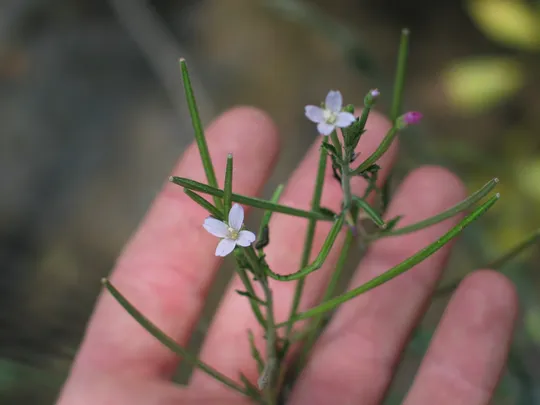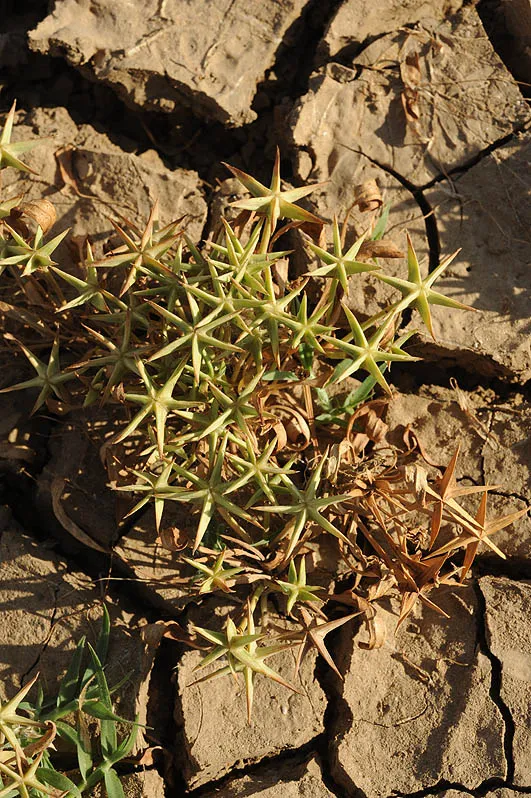Hoary Willow-Herb, Small-flowered Hairy Willowherb
Epilobium parviflorum

Epilobium parviflorum is very well known in European folk medicine. It is used mainly
for treating prostate gland disorders and growth problems.
Epilobium parviflorum is found in the northern Golan Heights, Hula Valley,
and Upper Galilee and the lower Hermon regions at seven documented sites, and
possibly at about ten sites. In the Northern Golan Heights, it was collected
once around the Banias; in the Hula Valley it is found in Tel Dan, Hatsbani and
the Hula Nature Reserve and in the Upper Galilee it is found in the Ayun Stream.
In the lower Hermon, it was collected from the Yafori Valley and Ein Qiniye.
In Israel – on stream banks and springs. In
Europe, the plant is found in a variety of habitats including roadsides and
agricultural areas.
The genus Epilobium consists of about 200 species found in temperate
and arctic zones of the Northern and Southern hemispheres of the globe. In Israel,
there are three species. E. hirsutum is extremely common, growing in wetlands throughout
the country and as a weed in gardens and agricultural areas. It has
characteristic broad leaves and large flowers 1-2 cm long. E. tetragonum is very similar to E. parviflorum in its small flowers and general
appearance, although it has a square stem and glabrous fruit and is widespread
in Israel, mainly in the Golan Heights and less so in the Hula Valley. Among
the three species of the Epilobium in Israel, E. parviflorum is the rarest and unlike the two
other species it has a fragmented distribution and sporadic populations. This
phenomenon is characteristic of the periphery of the range of common widely
distributed species growing in disturbed habitats. In addition to the three wild species of Epilobium in Israel, Zauschneria
californica, an American plant with flowers similar to those of Epilobium,
which was until recently included
in the genus Epilobium, is grown in gardens.
Epilobium belongs to the Onagraceae family whose main range and
its center of diversity is in America. A few genera in the family succeeded
over the geological periods in crossing the Atlantic Ocean and became
naturalized in the Eurasian continent. These include mainly herbaceous species
that grow in disturbed habitats or in wetlands, such as the genus Epilobium, that has distinctive seeds with
a specially developed pappus that are carried for long distances in the wind
and the species of the genus Onagraceae that thrive in disturbed habitats.
·
Most of the information regarding Epilobium parviflorum distribution sites is from the last decades of the 20th
century. Besides for the confirmation of its presence in the Hula Nature
Reserve in 2003 (Talia Oron), there is no current information on the sites in
the regions from which the plant was reported.
·
E. parviflorum is an aquatic plant exposed to all the factors that threaten Israeli
wetlands: desiccation, deteriorating water quality and pollution.
·
Some of the verified sites are located within nature
reserves: Tel Dan, Snir Stream, Ayun Stream and the Hula Nature Reserve.
·
E. parviflorum is a common species throughout the world that is not globally
endangered.
Wetland surveys should be conducted in the
northern regions to search and locate Epilobium
parviflorum, to obtain a clear
picture of the species distribution and population sizes. This information will
serve as the basis for monitoring. Reintroduction of E. parviflorum populations from surviving local sources to sites where it was
observed in the past should be considered, in cases where it is extinct.
Epilobium parviflorum is widely distributed
throughout Europe and the Mediterranean Basin. Israel is the southern limit of
its distribution. In America, it is an invasive species.
Epilobium parviflorum is a perennial plant characteristic of stream banks and springs in northern
Israel that grows on a limited number of sites and for which Israel constitutes
the southern limit of its range. There is a lack of updated information regarding
its current distribution. E. parviflorum has a broad global distribution
and is not globally endangered.
Current Occupancy Map
| 1000 squre meter pixel | 5000 squre meter pixel | 10000 squre meter pixel | |
|---|---|---|---|
| number of observations | 0 | 0 | 0 |
| in total pixels | 0 | 0 | 0 |
| Family | Onagraceae |
| Classification | On the endangered species list |
| Ecosystem | Mediterranean |
| Chorotype | Euro-Siberian - Mediterranean |
| Conservation Site | Hula Nature Reserve |
| Rarity |
1
3
6
|
|---|---|
| Vulnerability |
0
2
4
|
| Attractiveness |
0
0
4
|
| Endemism |
0
0
4
|
| Red number |
1
3.2
10
|
| Peripherality | N |
| IUCN category | DD EW EX LC CR EN VU NT |
| Threat Definition according to the red book | Vulnerable |
 Based on:
Based on:






